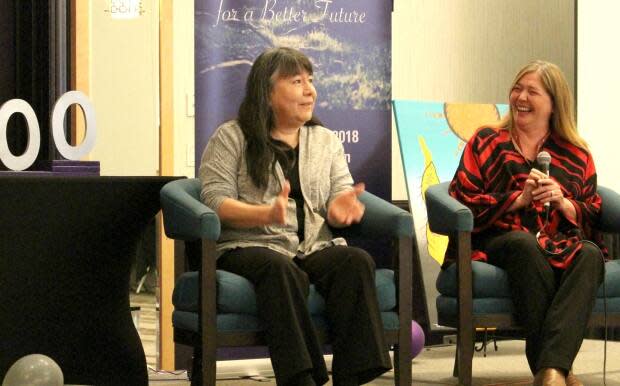New emergency shelter to be built in Natoaganeg First Nation


The Natoaganeg (Eel Ground) First Nation will be home to a new emergency shelter for Indigenous women, children and 2SLGBTQ people.
The initiative is part of Canada Mortgage and Housing Corporation and Indigenous Services Canada's investment of $85.6 million over five years to open 12 emergency shelters in communities across the country.
The program includes $10.2 million committed annually for ongoing support of the shelters.
The 12-bed shelter in Natoaganeg will serve 15 Mi'kmaq and Wolastoqey communities as well as other First Nations in the Atlantic region, according to Indigenous Services Canada.
The release states the shelter will provide culturally-informed services to help survivors of family violence recover from trauma, access support programming and create a stable environment where they can begin healing.
"In June, we found out that our proposal was successful," said Natoaganeg First Nation Chief George Ginnish. "That was a fantastic feeling for the group that validated all the work they had done and what they had thought was needed, and so [we're] really excited to start that process."
An Indigenous and women-led directive
Natoaganeg First Nation teamed up with health professionals and consultants to put the proposal together. Now, Ginnish said, they are looking to form an advisory committee that will work with a new executive director to run the facility .
Ginnish says a committee is helpful in getting input from all sides of the operation - anywhere from finance and HR to mental health and health services. Ginnish says the board is mostly made up of Indigenous women, and they are hoping to make room for at least one youth and elder.
"Those are really key pieces of services that can be rendered," said Ginnish. "We're trying to get a really good cross section skill set that can assist the selected director, advise and then work with that process. Because it is new — new to us — and it's a huge responsibility."
Ginnish says they hope to start construction of the shelter this fall or next spring, aiming to open for clients next fall.
Need for more Indigenous-led services
In New Brunswick, there are 15 First Nations that rely on just one Indigenous shelter, the Gignoo Transition House, based in Fredericton.
"Based on discussions I've had with the staff, there's always a waiting list there, only so many beds are available,' said Ginnish.
As the only Indigenous-led and non-profit transition service, president of the Gignoo Transition House Barb Martin said the announcement of a new shelter comes as a relief.

"The more shelters there are, the better," said Martin, who has been involved with the transition house for about five years on the board, and before that during its inception. "There should be a shelter in Tobique, there should be a shelter in Elsipogtog, there should be a shelter somewhere off reserve. So as a transition house, we can become a network to assist one another."
Martin said Gignoo can help train staff and provide resources on how to deliver culturally appropriate and informed care.
"We as Indigenous women came together to create places like the Gignoo to be part of the healing process, and not just to have a place for the victims of violence to walk through our doors. Our vision is to be part of a movement to heal our nation."
Although the announcement is a huge win, Ginnish said there is still a long way to go to fully meet the needs of the community.
"It helps a real need, but there's other as serious needs -- we've got issues with homelessness, we've got issues with serious addiction, where the individuals are not willing to seek treatment in the facilities that are available, or what is available isn't what they really need."
Dismantling violence against Indigenous women
Martin said trying to understand violence against Indigenous women and children creates equal parts horror and bewilderment.
"What is it? We're walking around in society with a big target written on our backs [so much so] that we can be victimized and we can be murdered without the attention of society."
The construction and ongoing support for this shelter are part of the federal government's response to the National Inquiry into Missing and Murdered Indigenous Women and Girls, reads the release.
The new shelter is a step in the right direction, said Martin, but consistent work from the federal government to act on the recommendations by the Truth and Reconciliation Commission is needed.
"Now, the public is increasingly aware of the issues that we have been dealing with for a long, long time… It's not so much the missing and murdered Indigenous women that seem to have got the public's attention, it's the children that have been found in those residential schools, that we find that who we really care for. We all have that in common."

